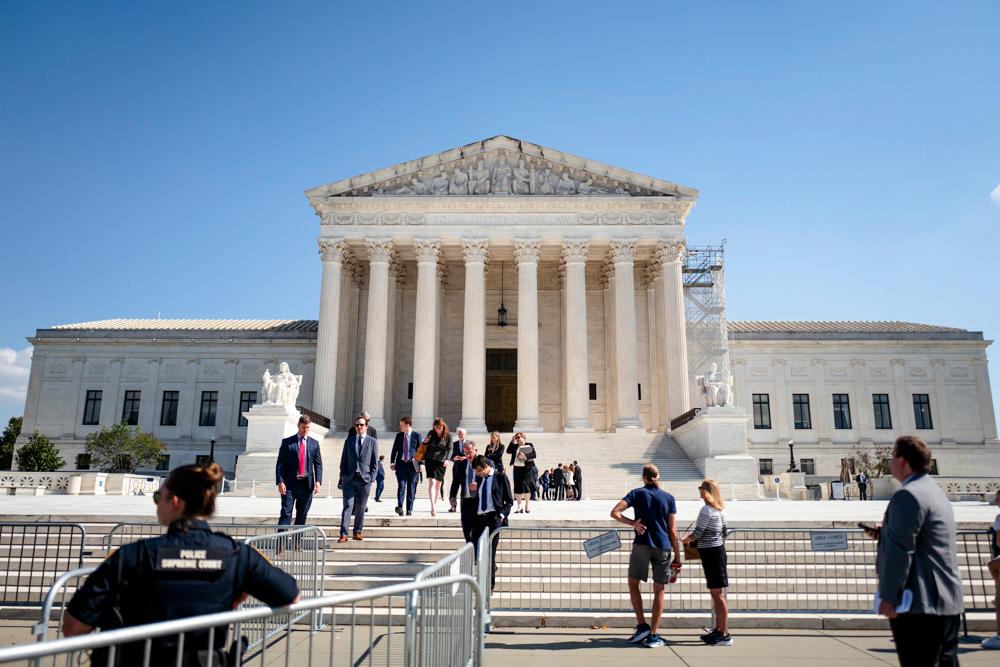The Supreme Court agreed June 8 to review the refugee case of a Guatemalan national facing deportation who argues that U.S. immigration authorities failed to follow proper procedure in his case.
Cited as Niz-Chavez v. Barr, the case is an appeal from the Cincinnati-based 6th Circuit Court of Appeals. As is its custom, the Supreme Court didn’t explain why it agreed to review the case. The Trump administration favors deportation in the case.
Agusto Niz-Chavez was born in Tajumulco, San Marcos, Guatemala, in 1990, and lived in that community with his family before coming to the United States in 2005. The family lived on land that they owned until a dispute arose in 2002 with people from Ixchiguán, a neighboring village, according to court documents.
Niz-Chavez said Ixchiguán villagers murdered his brother-in-law during the dispute and that two years later, things escalated when 50 armed villagers showed up on his land. The villagers took possession of the property by threatening to kill his family, so the family abandoned the land.
Niz-Chavez is now the father of three children who are U.S. citizens. He testified that if returned to Guatemala, he feared the villagers would see it as an attempt to reclaim the disputed land and would harm him. He also said his own village of Tajumulco might force him to fight in a land war against the other villagers.
Niz-Chavez appealed unsuccessfully to the Board of Immigration Appeals and the 6th Circuit.
In his appeal to the Supreme Court, he argues that a rule governing the notices sent by the government to would-be deportees was violated.
The Immigration and Nationality Act (INA) law provides that the attorney general may cancel the removal of a non-permanent resident who has 10 years of continuous presence in the United States.
But under the so-called stop-time rule, the government can terminate those periods of continuous residence by serving “a notice to appear under section 1229(a)” of the INA. That section defines “a ‘notice to appear’” as a “written notice ... specifying” specific information related to the initiation of a removal proceeding.
In the Supreme Court’s 2018 ruling in Pereira v. Sessions, the court held that only notice “in accordance with” the definition in section 1229(a) triggers the stop-time rule.
Niz-Chazev argues that, under the circumstances, he is therefore eligible for relief from removal.
Niz-Chavez is asking the court in his petition to decide whether the stop-time rule requires that “the government must serve a specific document that includes all the information identified in section 1229(a), or whether the government can serve that information over the course of as many documents and as much time as it chooses.”
Dale L. Wilcox, executive director and general counsel for the Immigration Reform Law Institute (IRLI), disagrees with the argument.
“We would side with the government on this issue,” he told The Epoch Times. “Removable aliens are complaining that their notices to appear were defective based on a requirement that is simply not in the statute.”
According to IRLI, “Aliens need only be informed of a short list of items, such as the time and place of their removal hearings, for notice to be effective. It is not necessary that [U.S. Immigration and Customs Enforcement] check the box informing an alien, for example, that he crossed the border illegally, or that he committed an aggravated felony. Presumably, the alien knows these things already. In any case, ICE’s failure to fill in a government form completely cannot be used by aliens to create extra rights that are not in the governing statutes.”
“Due process under the Constitution for these aliens consists of the procedures Congress has afforded them in the law. And Congress did not create a law strewn with technicalities for immigration enforcement agents to trip up on, and for these aliens to exploit to stay here.”





